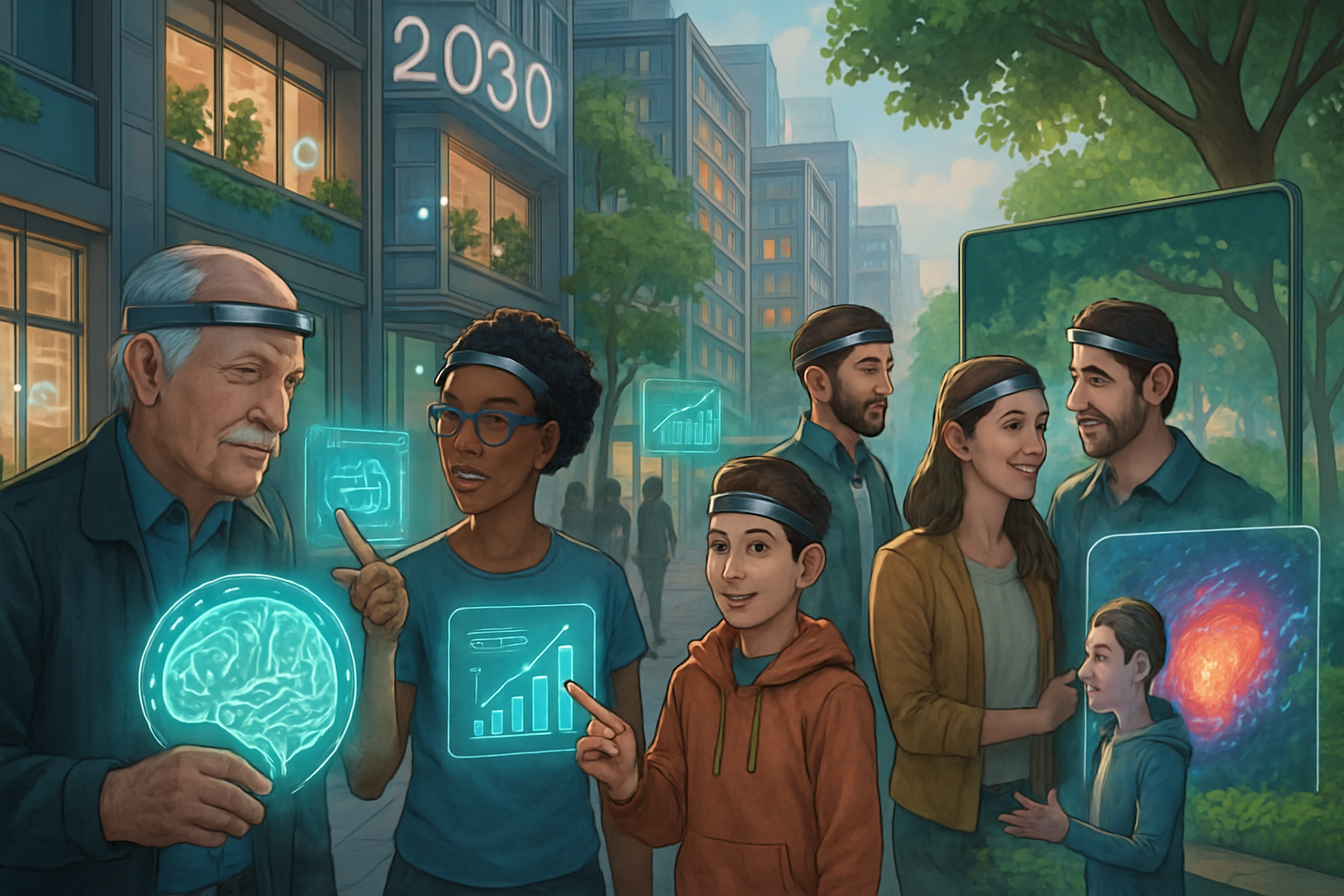How Neuralink and Brain-Computer Interfaces Will Reshape Everyday Life by 2030
By 2030, brain-computer interfaces could redefine human experience, moving from medical marvels to everyday essentials, reshaping productivity, wellness, and creativity. Explore how this frontier technology connects our minds to the world around us.

Welcome to the Mind Meld: BCIs, Neuralink, and the Dawn of 2030
Imagine controlling your home, computer, or even your coffee machine—just by thinking about it. By 2030, this won’t be a party trick for sci-fi heroes. Thanks to breakthroughs in brain-computer interfaces (BCIs) and the turbo-charged ambitions of companies like Neuralink, this future is coming straight for your neurons.
“Neuralink and next-generation BCIs are not just restoring lost abilities—they’re about to redefine what it means to be connected, productive, and even human.”
From Medical Marvel to Mainstream Must-Have
Let’s set the stage. In the mid-2020s, Neuralink's clinical studies ushered in a new era for patients with severe paralysis, enabling them to control digital devices with pure thought (Reuters, July 2025). But the real story is just beginning. Recent $650 million funding rounds have supercharged research and global trials (AI Tech Suite), and by 2030, BCIs are poised to move from the hospital to the living room, the classroom, and beyond.
What’s Actually Happening in Your Head?
The core tech is dazzlingly simple (in theory): ultra-thin electrodes, a chip the size of a coin, and a robot surgeon with the precision of a watchmaker. These devices detect and decode your neural signals, then wirelessly transmit commands to external gadgets—no more mashing buttons with sticky fingers.
- 2025: BCIs help restore digital agency for people with paralysis.
- 2027: Early adopters experiment with smart home control, gaming, and communication—no hands required.
- 2030: Mainstream consumers begin using BCIs for productivity, wellness, and even creativity. (Yes, you can compose a symphony with your mind. Mozart, eat your heart out!)
Everyday Life, Rewired
Let’s fast-forward to your typical Tuesday in 2030. Here’s how BCIs could quietly (or not-so-quietly) reshape your day:
- Morning Routine: You wake up, think "lights on", and your smart home responds. Coffee brews, news headlines scroll across your glasses, and your schedule updates—all without lifting a finger.
- Work & Productivity: Draft emails, design graphics, or code entire apps using only your thoughts. AI-powered tools adapt to your mental state, reducing distractions and even suggesting breaks when your brainwaves show fatigue.
- Education & Creativity: Students with learning differences use BCIs to enhance focus or access lessons directly. Artists and musicians craft masterpieces by thinking them into existence—no more creative block excuses!
- Wellness & Mental Health: Real-time mood detection helps you manage stress. Your BCI might suggest a meditation track, adjust your environment, or connect you with a mental health professional, seamlessly and privately.
- Social & Accessibility: Non-verbal communication flourishes. Those with speech impairments can join conversations in real time, while translation and sentiment detection bridge cultural divides.
“BCIs are about agency. They’re not just for restoring what’s lost—they’re for unlocking what’s possible.”
The Secret Sauce: AI + BCI = Superpowers
Here’s where things get wild. The magic isn’t just in the hardware. BCIs are powered by advanced AI algorithms that learn your unique brain patterns, translating intention into action with growing precision. Over time, your BCI adapts to you—think of it as a digital sidekick that gets smarter the more you use it (arXiv, 2025).
What does this mean for you?
- Hyper-personalized smart homes and wearables that respond to your mood, not just your voice.
- Adaptive learning platforms that sense confusion or boredom and adjust in real time.
- Wellness apps that know when you need a break—sometimes before you do.
The Big Questions: Ethics, Privacy, and Who Gets to Play
Of course, it’s not all mind-reading rainbows. As BCIs march into everyday life, ethical dilemmas loom large:
- Data privacy: Who owns your thoughts? Can your neural data be hacked? (Yikes.)
- Access & equity: Will BCIs be a luxury for the few, or a right for the many?
- Consent & autonomy: How do we ensure people control their own neural devices, not the other way around?
Researchers are calling for responsible prompt engineering and robust safeguards to embed ethics into every layer of BCI and AI design (arXiv, 2025). The future isn’t just about what we can do—it’s about what we should do.
Get Ready: How to Prepare for the BCI Age
Sound overwhelming? Don’t worry, you don’t need to shave your head and plug in just yet. Here’s how to stay ahead:
- Follow BCI and AI news—subscribe to trusted sources (like Funaix Insider) for smart, bias-free updates.
- Experiment with wearable tech and smart home devices. Today’s gadgets are tomorrow’s BCI companions.
- Stay curious—and skeptical. Ask questions about privacy, inclusivity, and long-term impact. The best future is one we co-create.
Join the Conversation—Literally
Want to share your thoughts (pun intended) or see what others are saying? Only subscribers can read and write comments on our blog. Subscribe for free today to unlock smart news, perks, and a front-row seat to the brain-tech revolution. For now, it’s cost-free—your neurons (and your wallet) will thank you.
Enjoyed this glimpse into the future? Become a Funaix Insider and never miss a mind-bending update. The brain-technology revolution is just beginning—and you’re invited.




